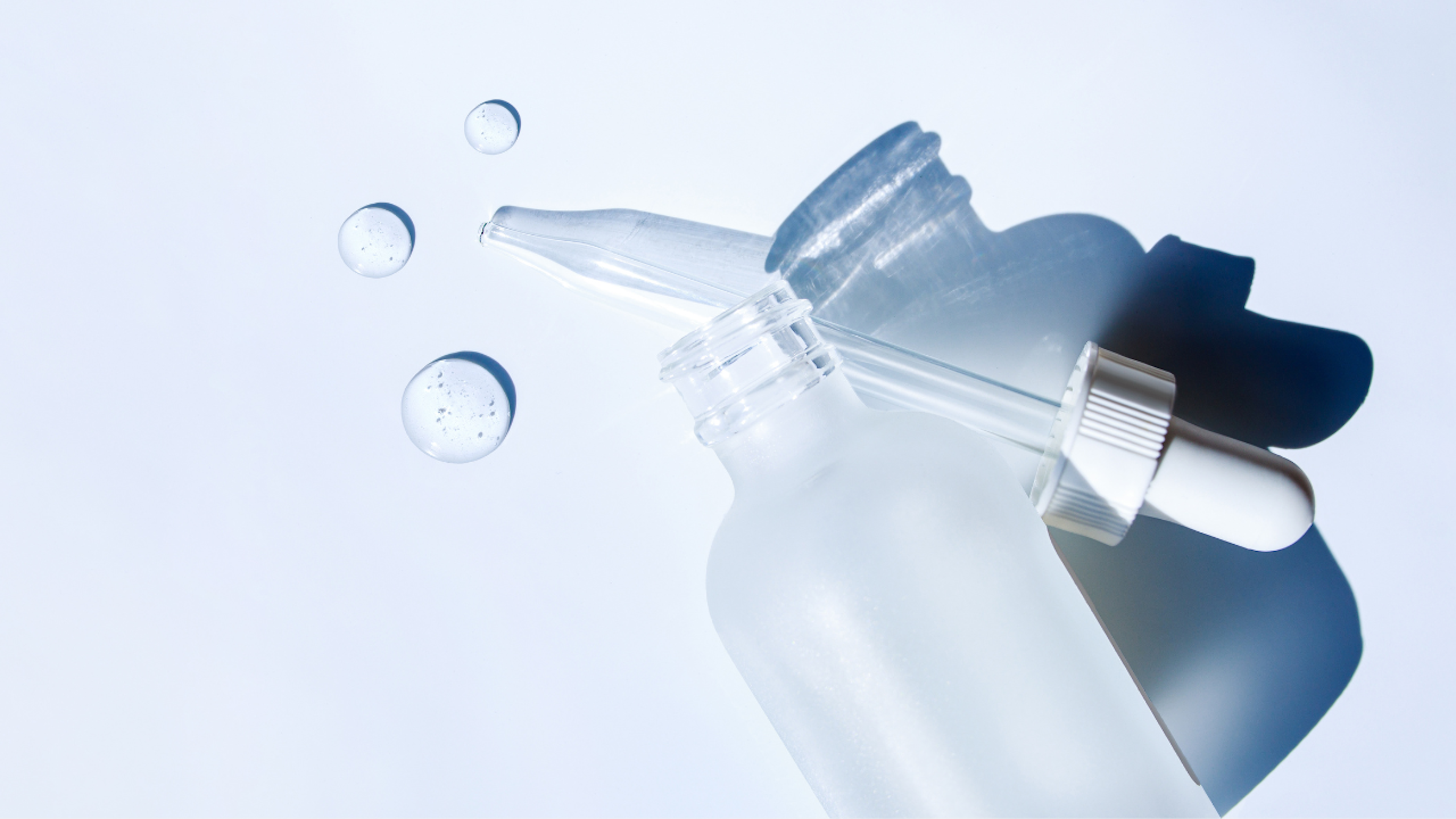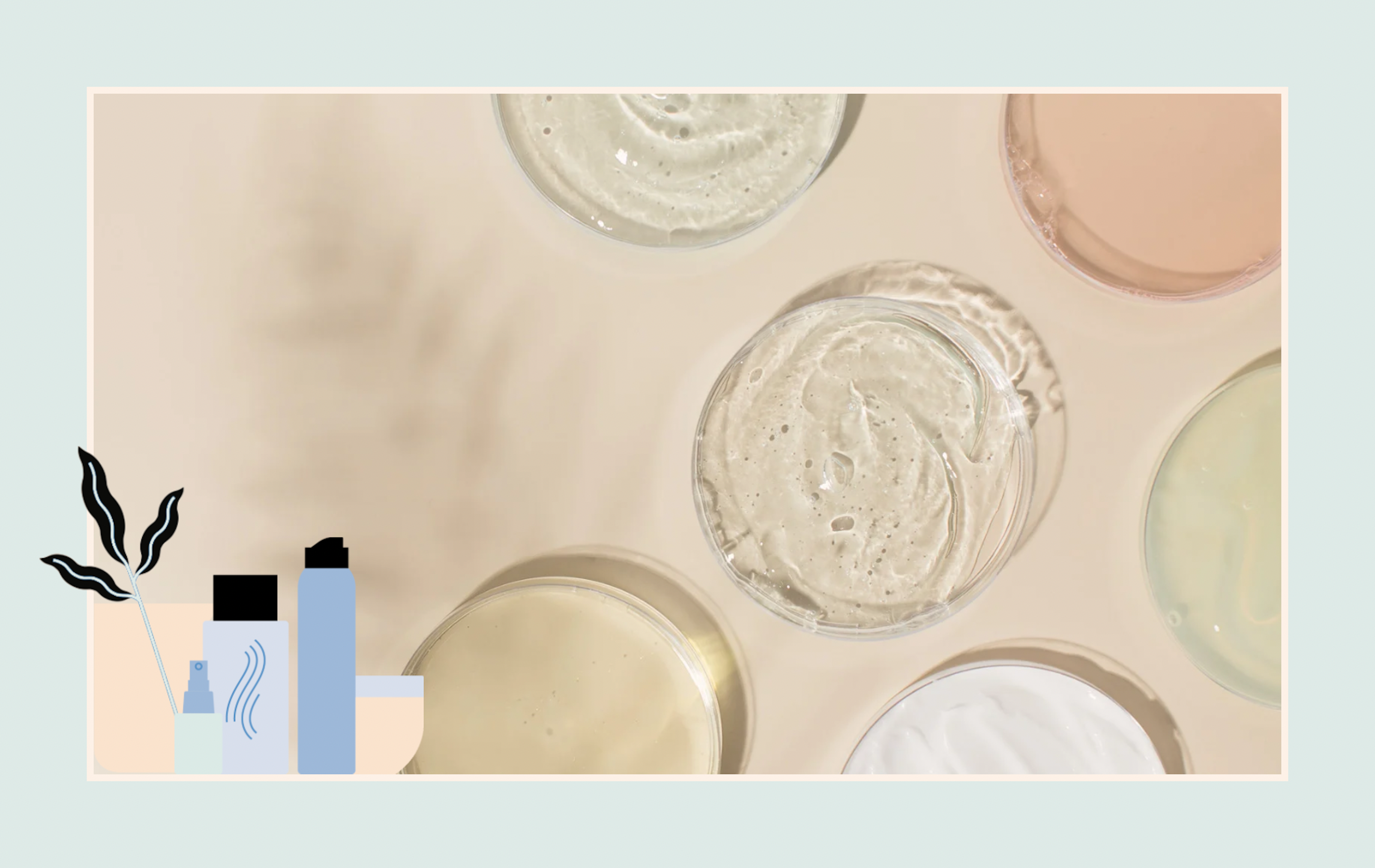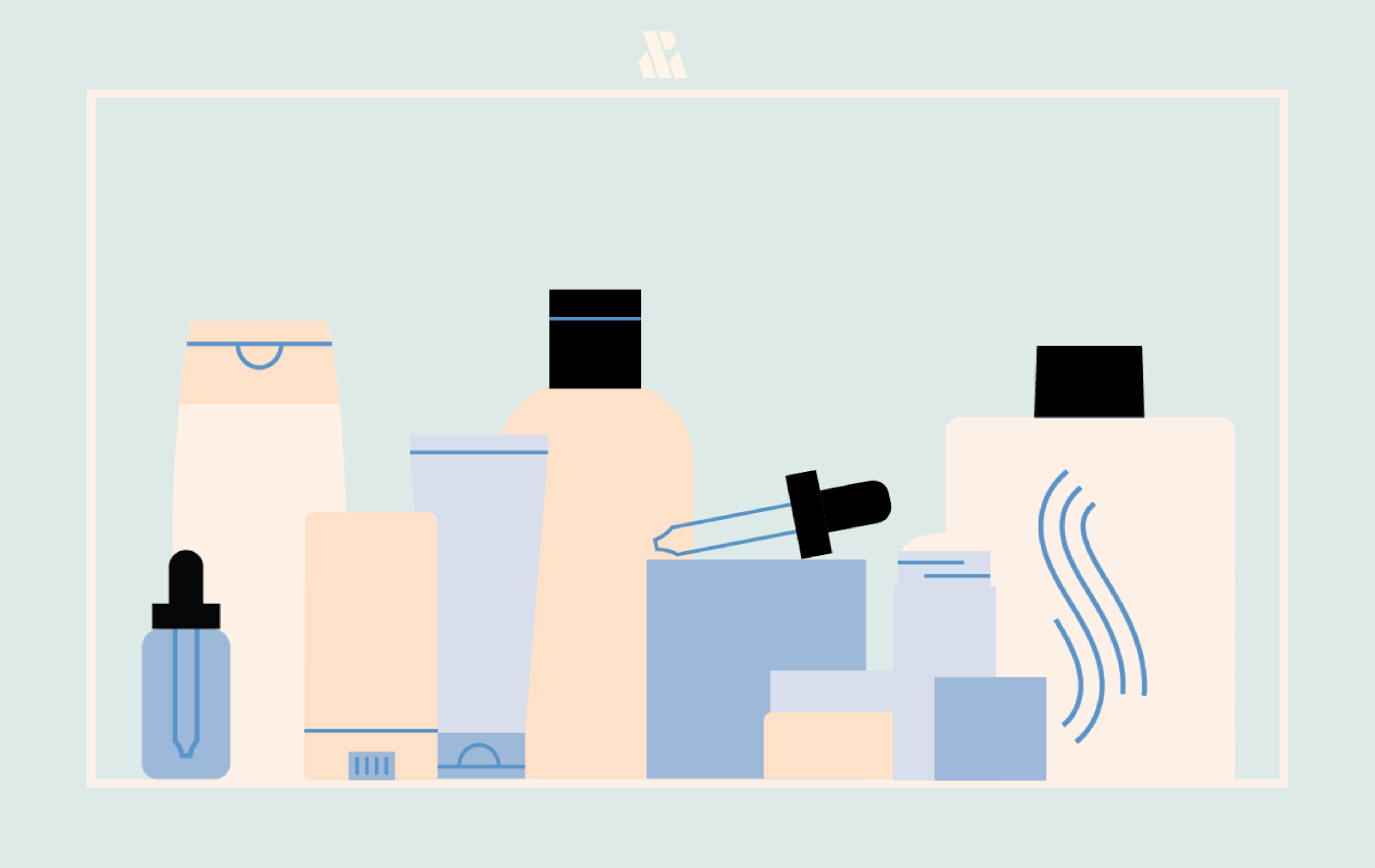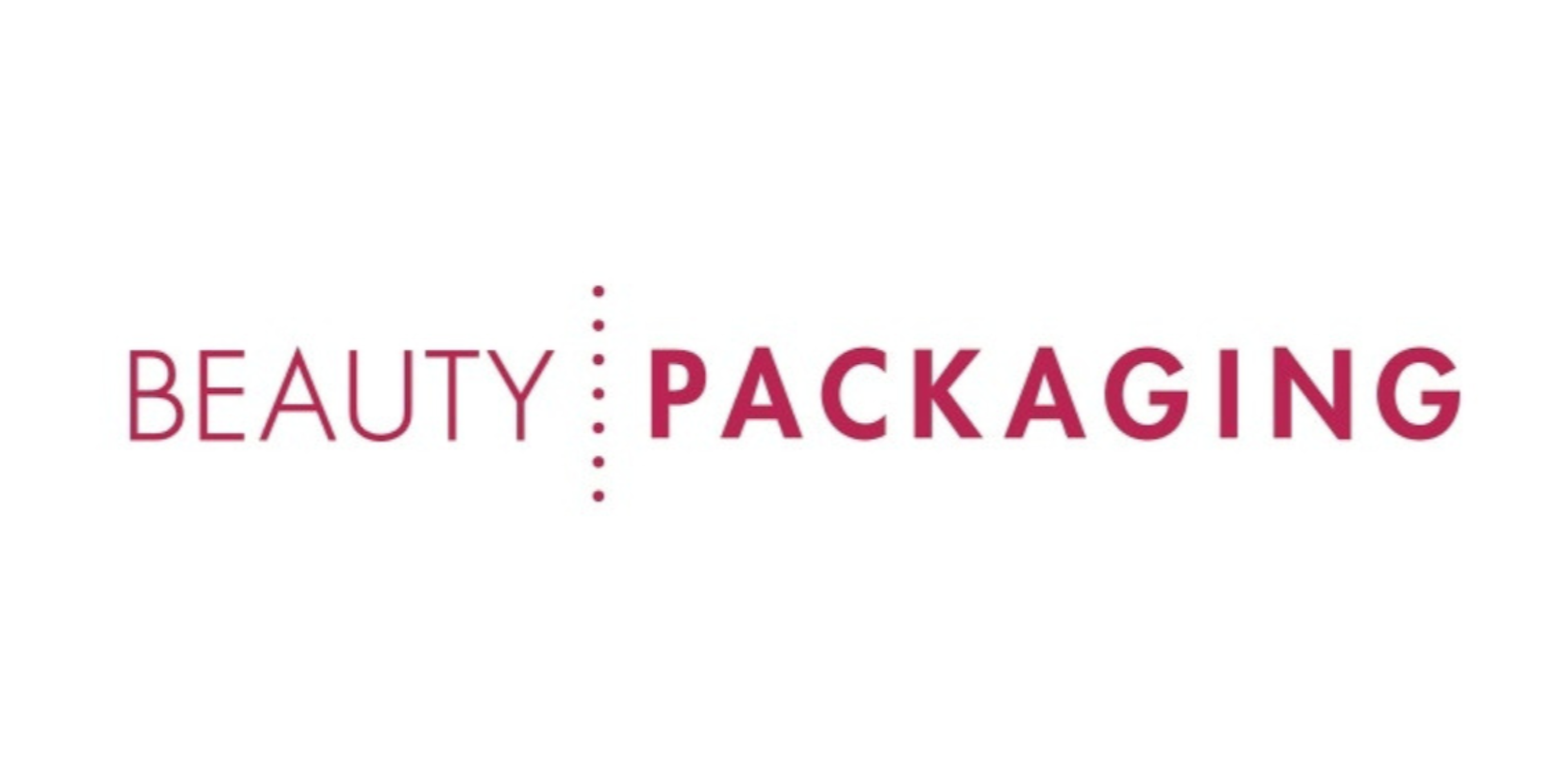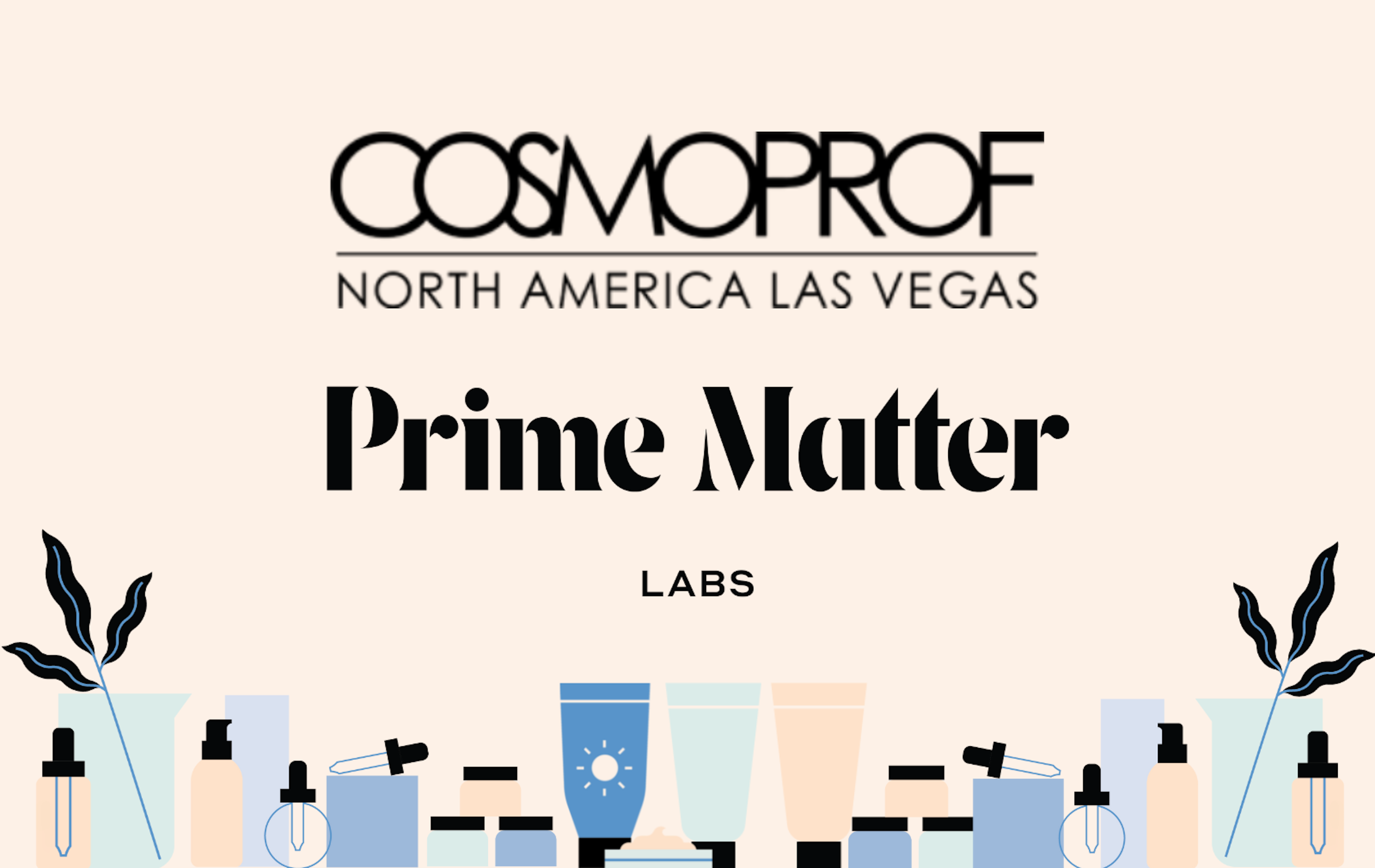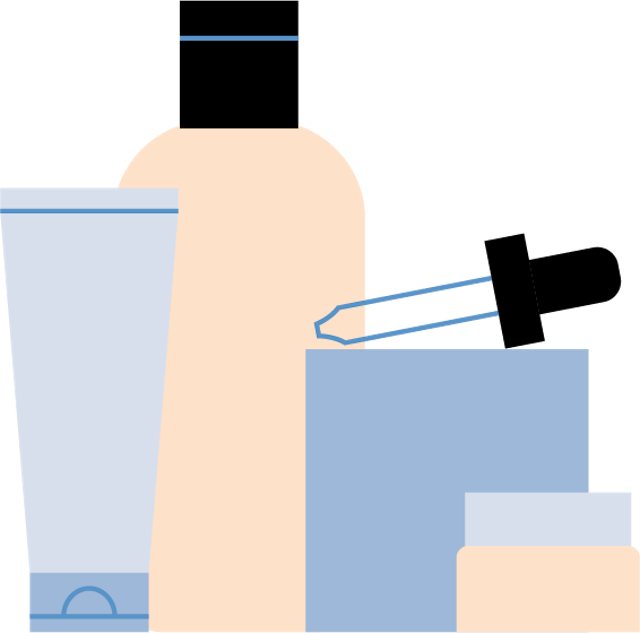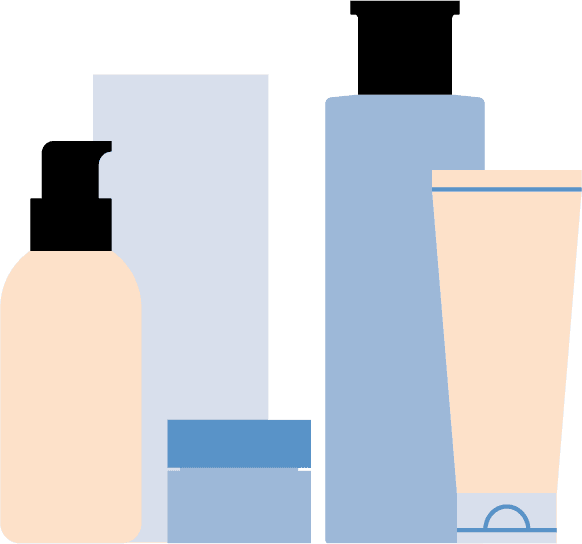
You may already be familiar with the gut microbiome’s important role in your overall health and the array of products available to balance and improve gut health. But more and more consumers are becoming aware that their skin also has a microbiome and that the products we apply can affect the overall appearance and health of your body’s largest organ.
The microbiome cosmetic products market is projected to grow from USD 45.71 million in 2022 and reach USD 76.16 million by 2030. The growth is driven by the popularity of probiotic skin care products, rise in technological advancements and R&D innovations, the popularity of “natural” skin care products and an increase in the prevalence of skin conditions such as eczema, psoriasis, acne, and other skin diseases.
THE SKIN MICROBIOME
The skin microbiome, also known as the microflora or microbiota, is the collection of microorganisms that live on and within your skin, including bacteria, fungi and viruses. Different microorganisms live on different areas of your skin depending on many factors, such as skin texture, thickness and humidity. Most of these organisms are beneficial to the skin and play an essential role in maintaining the skin's health by helping to protect it from harmful pathogens, regulating inflammation and immune responses, and aiding in the breakdown of sebum and other skin lipids.
The composition and diversity of the skin microbiome can be influenced by factors such as age, gender, genetics, diet, lifestyle, and environment. Maintaining a healthy skin microbiome can be beneficial in preventing or treating common skin conditions such as acne, eczema, psoriasis and rosacea which result when “bad” bacteria overruns “good” bacteria.
THE SKIN BARRIER
The skin barrier refers to the overall function of the skin to protect the body from external factors. It is found in the stratum corneum or the outermost layer of skin. The skin barrier helps to retain water within the skin, protect from environmental stressors, regulate the body’s temperature, moderate the immune system, and fight off oxidative stress. A healthy skin barrier keeps irritants out while locking moisture in. It’s also where most of the skin bacteria can be found.
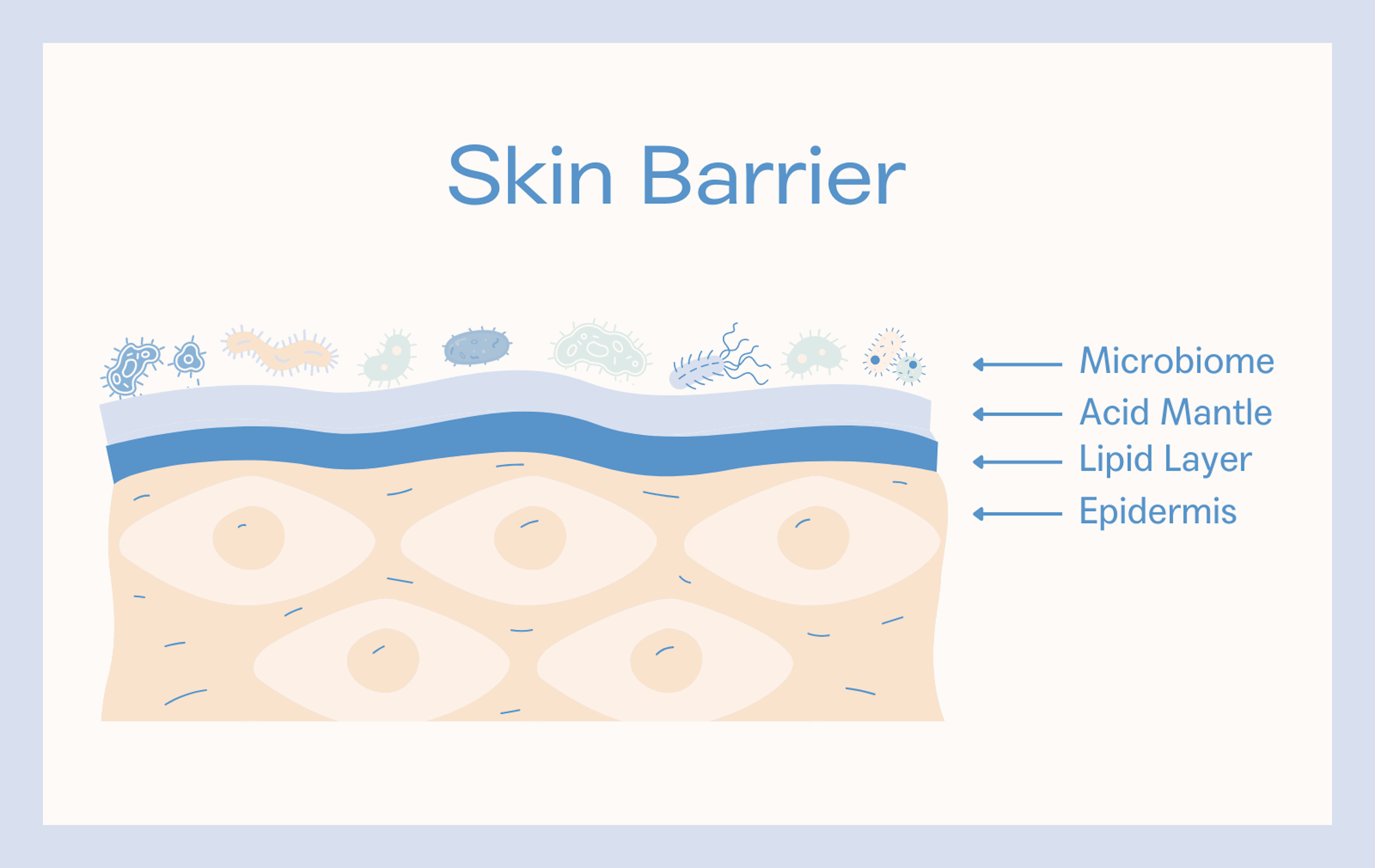
The skin barrier is made up of several components that work together to protect the body from external factors. It includes:
- Microbiome: The collection of microorganisms (microbiota) that live on the skin.
- Acid Mantle: A thin, protective layer formed by the combination of sebum and sweat that helps to maintain the health and function of the skin barrier.
- Lipid Layer: A thin layer of lipids (fats) primarily composed of ceramides, cholesterol, and fatty acids, that helps to prevent water loss from skin, as well as protects against harmful substances and infections.
The lesser-known acid mantle is a key part of the skin barrier. It is the hydrolipidic film on the surface of the skin that is made up of water, sweat and sebum. It works as a chemical protector of the skin due to its acidic nature with a pH range of around 4.5 - 5.5. The prime acidic state for a healthy skin microbiome is in the range of 4.7–5 pH, which ensures that the acid mantle will acts as a barrier and make it harder for bad bacteria to overgrow. When the skin’s pH is elevated, the skin barrier doesn’t function as well, allowing opportunities for inflammation-causing bacteria to grow and disrupt the balance of the skin microbiome.
The lipid barrier also plays a crucial role in maintaining the health and function of the skin barrier. These lipids are organized into a layered structure that helps to prevent water loss from the skin and protect against harmful substances and infections. Disruption of the skin lipid barrier can lead to issues like dryness, flakiness, redness, and itching. External factors such as harsh soaps, hot water and harsh skin care products can damage the skin lipid barrier, as can environmental factors such as cold weather and low humidity.
DISRUPTING THE SKIN BARRIER
The skin barrier can be disrupted through the overuse of strong ingredients like exfoliating acids and retinoids, or by washing the skin too frequently or with products that are too alkaline. We’ve seen an increased focus on active ingredients in beauty and personal care products with the popularity and variety of exfoliating acids and retinoids expanding with every new product that hits the shelves. While these ingredients are beneficial and can help improve the appearance of skin, they can also compromise the skin barrier when used incorrectly or too often, leading to irritated, dry or flaky skin. The popularity of the skin cycling trend is an example of how consumers have learned to customize their approach to these ingredients through the process of cycling through skin care products to maximize results and minimize irritation.
Additionally, UV rays, pollution and exposure to chemicals can also disrupt the skin barrier by increasing the skin’s alkalinity. Exposure to UV radiation and pollution can trigger the production of free radicals and oxidative stress which can further damage the skin and lead to premature aging.
As consumers become more educated on how the skin barrier influences their skin’s health, they will look to beauty brands to provide them with solutions to incorporate into their routines. While there are already a range of ingredients and products that consumers can use to assist in maintaining a healthy skin barrier, there’s still much to learn about the thousands of microorganisms that make up the skin’s microbiome and space to innovate in how we approach its maintenance.
Prime Matter Labs offers tailored product development and production, adapting and innovating along with your business. Work with our team to capture exactly what it's going to take to meet your consumers’ unique needs. Contact your Prime Matter Labs Project Manager or start your project here.


